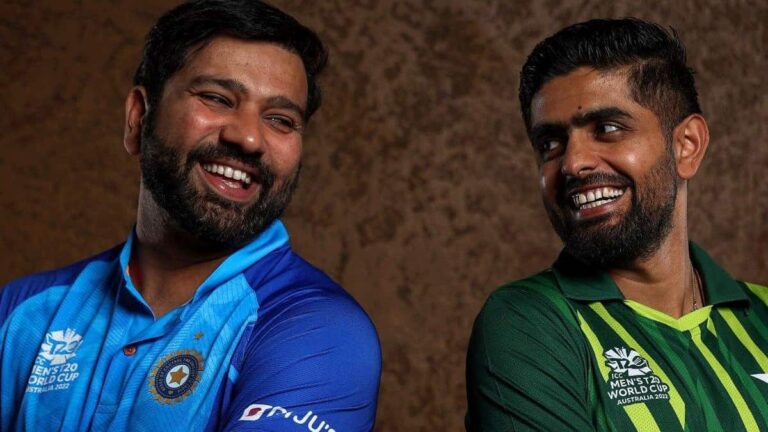Umer Hussein Wilkes University (AP) – After the Civil War, cricket’s popularity waned. The military became fascinated with baseball, a new sport easier to play on makeshift stadiums, and baseball eventually emerged as the national pastime.
Still, cricket is the second most-watched sport in the world after soccer, and with the United States and the West Indies co-hosting the T20 World Cup, organizers are hoping the sport will prove popular with American audiences.
Matches played in the tournament are called T20 and last around three hours, which is shorter than the longer formats of the game. One-day international matches usually last seven to eight hours, while Test matches last up to five days.
The tournament kicks off on June 1, 2024, with the US beating neighbours Canada. But the game that’s generating the most buzz, especially among South Asians, is the one yet to be played: India vs Pakistan.
Matches between the two nations typically draw huge audiences: the 2011 World Cup match between India and Pakistan was watched by more than 400 million people worldwide. By comparison, Super Bowl 53 in 2024 was watched by around 125 million people.
The match, scheduled to be played on Long Island on June 9, 2024, will mark a new chapter in one of sports’ fiercest rivalries and a game deeply intertwined with the complex geopolitical history of both countries.
The roots of the rivalry
Cricket became popular in India during the period of direct British rule of the Indian subcontinent, known as the British Raj, which lasted from 1858 to 1947.
The sport was introduced by British sailors and the first recorded match was played in western India in 1721.
Scholars argue that the British promotion of cricket in India was part of a policy of anglicization, encouraging Indians to adopt British customs and values. Promoting cricket was one way in which the British instilled loyalty in Indians to the British Empire and aided their colonial rule.
Following the partition of India in 1947 and the creation of Pakistan, both countries formed their own national cricket teams.
Pakistan was founded as an independent state for Muslims who feared religious persecution and sought political and cultural independence, but the partition was extremely bitter, marked by a violent and bitter split primarily along religious lines, with Hindus and Sikhs migrating to India and Muslims resettled in Pakistan.
The process left deep scars in both countries’ memories: it was the largest population movement in history, leaving around 10 million people as refugees and one million dead in border massacres and riots.
In October 1952, five years after independence, the Pakistan team toured India to take part in the first ever five-match cricket Test match series. A standard cricket Test match lasts five days, with teams playing six hours a day, with breaks for lunch and tea.
The first cricket series between the two countries, won by India, was a poignant reminder of the painful separation. Many of the Pakistan team officials, fans and players who travelled from Pakistan to Amritsar in India retraced the route they had taken only five years earlier.
Post-colonial ties between India and Pakistan remain tense and have seen several wars, most of them over the disputed territory of Kashmir, a strategically important region claimed by both nuclear-armed powers.
Cricket Diplomacy
Despite sharing a common border, culture and history, India and Pakistan have strict trade and travel restrictions on each other’s countries, but their people share a passion for cricket that transcends political divides.
The two countries have engaged in what scholars call “cricket diplomacy.”
For example, in 1987, Pakistan’s then President Mohammed Zia-ul-Haq visited India to watch a cricket match, but he also met with Indian officials to ease rising tensions between the two countries. Similarly, in the early 2000s, the Indian cricket team visited Pakistan twice as India’s then Prime Minister Manmohan Singh sought to promote peace with the neighbour, and in 2005, Pakistan’s then President Pervez Musharraf visited New Delhi to watch a cricket match between the two countries.
But after the 2008 Mumbai attacks, in which terrorists allegedly linked to Pakistan killed more than 160 people in the city, the Indian government banned its cricket team from touring Pakistan, even for international tournaments. Since 2009, Pakistani players have also been barred from taking part in the hugely popular Indian Premier League, which features star cricketers from England, the West Indies and Australia.
Focus on Nassau County
There’s a reason why Nassau County, located on Long Island just east of New York City, was chosen to host the T20 matches.
Hundreds of thousands of South Asian immigrants call the New York City metropolitan area home, including more than 700,000 Indian immigrants.
South Asian immigrants and their descendants have long been ridiculed and stereotyped in the U.S. media, but they are increasingly holding positions of influence, including Vice President Kamala Harris, Google CEO Sundar Pichai and actor Kal Penn.
Cricket matches between India and Pakistan are so rare that the cheapest tickets sell for between $600 and $1,200 on the second-hand market, with VIP tickets costing as much as $40,000 each, plus nearly $10,000 in extra fees, bringing the total cost to more than $50,000.
Clearly, interest in cricket is on the rise in the United States. As sports broadcasters and sponsors seek new audiences, cricket-crazy South Asian immigrants represent an untapped market. Major League Cricket, the sport’s first U.S. professional league, played its inaugural season in 2023. One of the six teams is based in New York City; another is in Dallas, a metropolitan area that also has a large South Asian immigrant population.
For now, it’s hard to imagine a better scenario for cricket supporters: Massive crowds cheering on a rare matchup between cricket’s biggest rivals in America’s largest media market.

